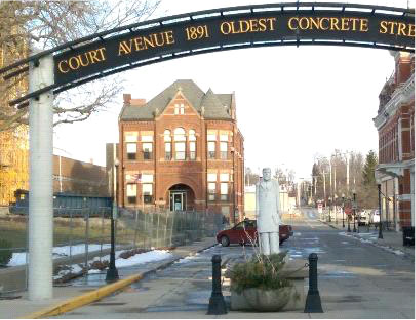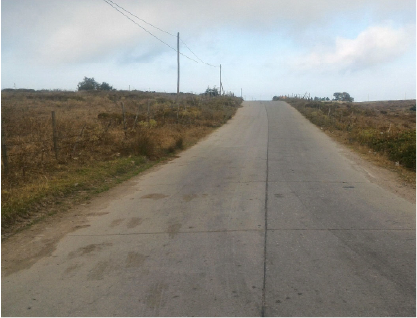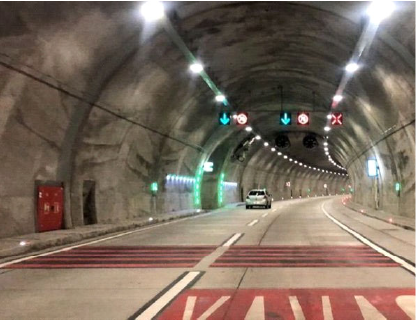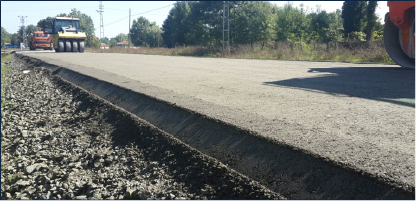THE STRONG AND RELIABLE PATH TO MODERN INFRASTRUCTURE: CONCRETE ROADS
Safe, durable, and sustainable roads are essential for both economic development and everyday life. With enhanced durability, low maintenance and repair costs, and a lifespan of up to 50 years, concrete roads are an integral part of modern infrastructure projects.
Rigid pavements, or concrete roads, use hydraulic binders such as cement to distribute the loads over a wide area, transferring them to the subgrade. This allows for construction with thinner and fewer sub-layers.
Concrete roads act like beams, providing high load-bearing capacity that resists damage under heavy traffic. Their inorganic nature makes them non-flammable, and they offer significant environmental benefits, leading to widespread use worldwide.
HISTORY OF CONCRETE ROADS
The world’s oldest concrete road, Court Avenue in Ohio, USA, has been in service since 1891 and continues to operate today, over 133 years later. Additionally, Australia's first concrete road project, Victoria Parade in Melbourne, was built in 1928. Since the 1920s, many European countries, including Germany and Belgium, began adopting concrete roads.

The World's Oldest Concrete Road – Court Avenue, USA
In Turkey, the oldest concrete road is the NATO Radar Base road, constructed in 1953 in Sinop. Despite over 80 years of continuous use without the need for maintenance or repairs, this road serves as a vivid example of the technical superiority of concrete roads. Similarly, the first concrete roads built in Trabzon in 1958 and in Adana in 1959 stood out for their high durability and low maintenance costs, paving the way for Turkey’s current network of over 21,000 kilometers of concrete roads.

Turkey’s Oldest Concrete Road – Sinop NATO Radar Base Road
Rigid (concrete) pavements are used in various applications, including rural and urban roads, ports, industrial areas, and airports.
ADVANTAGES OF CONCRETE ROADS
Long Service Life
Due to their strength and durability, concrete roads have a service life 3-4 times longer than alternatives. Roller-compacted concrete roads used in rural areas have a service life of 25 years, while Jointed Plain and Continuously Reinforced Concrete Pavements used on highways can last up to 80 years. The world's oldest concrete roads are living examples of their long service life.
Low Maintenance and Repair Needs
Concrete roads do not deform under heavy loads or high temperatures, requiring very little maintenance and repair over their service life. Studies show that the life cycle costs of concrete roads are much lower than those of flexible pavements.
High Fire Resistance
Since the materials used in concrete roads are inorganic, they are non-combustible. Unlike flexible pavements, they do not release toxic gases when exposed to fire. Due to these advantages, the use of concrete roads is legally mandated in tunnels longer than 1 kilometer in many European countries.

Çamlıca-Libadiye Tunnel – Istanbul
Fuel Savings
Unlike flexible pavements, concrete roads have a rigid structure that minimizes flexing and settling interaction. This results in an average of 7% fuel savings, particularly for heavy vehicles. Studies show that concrete roads save 0.45 liters of fuel per 100 km per heavy vehicle and reduce CO2 emissions by 2.1 kg.
THE ROAD TO SUSTAINABILITY: CONCRETE ROADS
As urbanization and transportation needs increase, so do environmental impacts, with climate change becoming a growing threat. According to the Environmental Protection Agency (EPA), the transportation sector accounts for 29% of greenhouse gas emissions in the U.S.
The transportation sector's contribution to climate change can be examined in two main areas: the emissions produced by vehicles using the transportation network, and the environmental impact of the road surface types, which dominate the sector.
Concrete roads have an albedo value 3-4 times higher than asphalt roads. Asphalt roads, due to their dark color, absorb more sunlight and typically have a low albedo value around 0.10. This causes asphalt roads to raise surface temperatures, contributing to the urban heat island effect and accelerating global warming.

Concrete Roads Have the Potential to Reflect 3 Times More Sunlight Than Asphalt Roads
Studies have shown that through the process of re-carbonation, concrete roads can reabsorb up to 21% of the carbon dioxide released during cement production due to calcination. In short, concrete roads offer significant advantages in the fight against climate change and play a crucial role in environmental sustainability. Urban planners and infrastructure engineers can consider these benefits to create more sustainable and climate-friendly infrastructures.
TYPES OF CONCRETE ROADS
Concrete roads are constructed using different techniques across five main types, each suitable for different applications:
Jointed Plain Concrete Pavements (JPCP)
Jointed Plain Concrete Pavements do not contain continuous reinforcement but use dowel and tie bars in the joints, making them economical and long-lasting. The first examples of concrete roads worldwide were typically constructed as JPCP. This method is still successfully used on highways in the U.S.
Jointed Reinforced Concrete Pavements (JRCP)
JRCPs use dowel and tie bars along with additional reinforcement, such as steel mesh, allowing for wider joint spacing. Some JRCP roads in the U.S. remain in service today.
Continuously Reinforced Concrete Pavements (CRCP)
CRCP contains continuous reinforcement in both the longitudinal and transverse directions, eliminating the need for joints while offering superior load-bearing capacity. CRCP is widely preferred on highways in Belgium and other parts of Europe due to its high driving comfort and reduced traffic noise.
.png)
Continuously Reinforced Concrete Pavement (CRCP) Application – Belgium
Roller-Compacted Concrete Pavements (RCC)
Roller-Compacted Concrete (RCC) pavements combine the speed and ease of asphalt construction with the strength and durability of concrete. Built without reinforcement, RCC pavements are known for their rapid construction, quick opening to traffic, and high strength and durability. RCC is widely used in industrial areas, ports, military facilities, and roadways.

Roller-Compacted Concrete (RCC) Application – Turkey